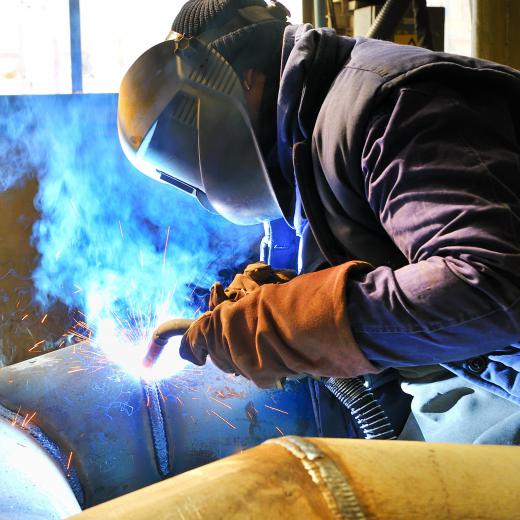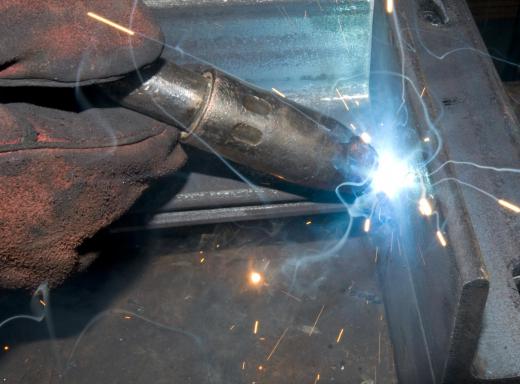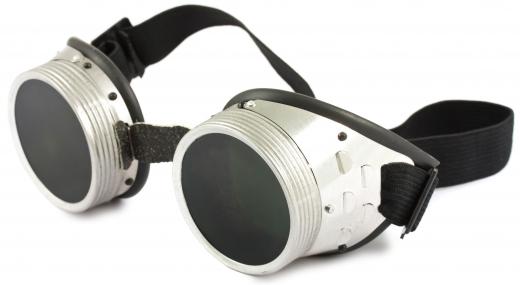Welding helmets are headgear that protect the face, neck, and eyes from dangerous sparks, heat, and infrared and ultraviolet rays emitted when welding. The two main parts to a welding helmet are the protective helmet itself and the window through which you can see what you are doing. You should choose a welding helmet based on the quality of this light filter, called a lens shade, overall comfort, and multifunctionality.
Both professional and hobbyist welders need a high quality welding helmet that is easy to use and appropriate for their type of work. In the past, it sufficed to use a helmet-like shield that only covered the face with a permanently darkened lens shade. One would flip up and down this shield between welds. It was inconvenient, difficult to see what one was doing, and hard to use in cramped spaces, such as underneath a car. Now technology has made welding helmets with auto-darkening lens shades that always block 100% of infrared and ultraviolet light, but also filter visible light from the welding arc only during welding.

The view screen is the most important and most expensive part of a welding helmet. It has a darkness rating or range that corresponds to the energy output on your welding torch. For welders who work with the same amperage and the same metal, they can go with a "fixed" eyeshade. For those who are working with a wide variety, variable lens shields sense what you are welding and darken to the right shade.

Another rating for auto-darkening lenses is the time it takes them to darken after an arc has begun. It's safe to use welding helmets that darken within 4/10ths of a millisecond, since your eye cannot sense the light change in that time. Some helmets are powered by batteries that can be used indoors, but must be charged. Other varieties use sunlight, good for outdoors, but aren't compatible with the dark. Of course, you also want a lens that is large enough for you to have an ample field of view.

Other considerations are how the welding helmet looks, as there are models with interesting shapes, decals, and colors. Some kinds can be fitted with accessories, such as breathing filters that pipe in fresh air and reduce fogging. Others have removable view screens, so you can upgrade or switch them according to your needs. Welding helmets also significantly reduce a welder's risk for cancer.
